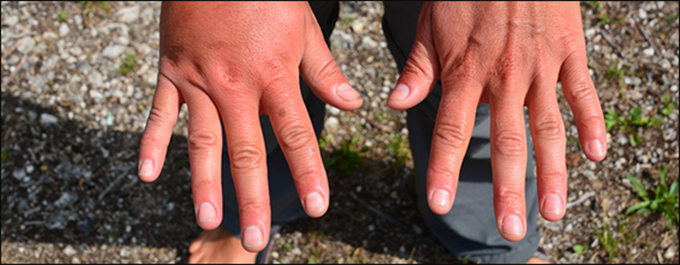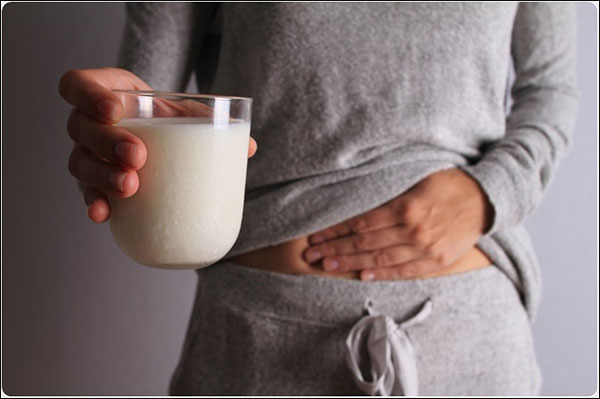Natural Cure For Complex Regional Pain Syndrome (CRPS)
Abstract
The most common condition that causes people to seek medical help is pain. Chronic pain syndrome is a poorly understood condition that offers a substantial challenge to healthcare providers owing to its intricacies. Complex regional pain syndrome (CRPS) is a kind of chronic pain that affects mostly one arm or leg. CRPS arises after an accident, surgery, a stroke, or a heart attack. In comparison to the intensity of the initial injury, the agony is excessive.

Introduction
Complex regional pain syndrome is a painful condition in which a large number of nerve impulses are sent to a single point. CRPS is thought to be caused by a malfunction with the central or peripheral nervous systems, according to specialists. It is most common in adults between the ages of 20 and 35. The only people who are affected are children and the old. Females are more likely to be affected than men. The majority of doctors consider chronic pain to be diagnostic if it lasts more than six months, however, others start at three months. Although there is no known treatment for CRPS, Ayurveda may be capable of finding relief.
Ayurvedic Methodology
Our natural condition, according to Ayurveda, is one of health, happiness, and inner well-being. When the body is free of toxins, the mind is at ease, emotions are peaceful and cheerful, wastes are properly cleared, and the organs are operating regularly, it is said to be healthy. Our physical and mental systems acquire pollutants in a busy, stressful, and toxic environment, leading biological function to deteriorate. This weakens our systems over time, allowing chronic, degenerative, and non-specific diseases to arise. These may progress into major illnesses, wreaking havoc on a person’s health and well-being.
Symptoms
The following are some of the signs and symptoms of CRPS:
- Burning or throbbing pain in your arm, leg, hand, or foot that doesn’t go away.
- Touch sensitivity or cold sensitivity.
- Inflammation in the painful region.
- Skin temperature fluctuations -oscillating between sweaty and chilly.
- Skin color changes, ranging from white to blotchy to red or blue.
- Skin texture changes in the afflicted region, which may become sensitive, thin, or glossy.
- Hair and nail growth changes.
- Stiffness, edema, and injury to the joints.
- Muscle spasms, tremors, weakness, and memory loss are all symptoms of Parkinson’s disease (atrophy).
- Reduced mobility in the afflicted body portion.
Causes
CRPS is a condition whose etiology is unknown. Damage to or abnormalities of the peripheral and central nervous systems is assumed to be the cause. CRPS is most often caused by trauma or injury. There are two forms of CRPS, each with identical signs and symptoms but distinct causes:
- Type 1: This form, also known as reflex sympathetic dystrophy (RSD), develops after an illness or injury that does not directly impact the nerves in the affected limb. Type 1 CRPS affects around 90% of persons with the condition.
- Type 2: This kind, formerly known as causalgia, exhibits symptoms that are identical to those of type 1. Type 2 CRPS, on the other hand, arises after a specific nerve lesion.
Chronic Pain and Exercise
People with chronic pain who exercise consistently use fewer medications and have similar pain alleviation. Exercises that target specific muscle groups, tendons, and ligaments help to reduce pain and strengthen muscles, tendons, and ligaments. Endurance workouts help to relieve joint pain. Muscles that are stronger are less prone to micro trauma and have fewer pain triggers. Exercise on a regular basis will help you sleep better and have more energy. A solid fitness program will involve optimal body, mind, and muscle alignment, as well as a strong stretching routine and a core balancing endurance program. Under the guidance of a skilled specialist, this should be done.
Ayurvedic Treatment
Aside from exercising, herbal medicines might help you get relief from chronic pain. That is why Planet Ayurveda offers such natural pairings. It is a herbal company that uses herbal remedies derived from pure and high-quality plants to treat a range of chronic and tough conditions. Planet Ayurveda also provides a variety of herbal costochondritis therapies that may help control and cure the condition naturally.
- Ashwagandha Capsules
- Musli Strength Capsules
- Rumogin 5 Capsules
- Yograj Guggul
- Nourish-Maxx powder


Description of the Products
1. Ashwagandha Capsules
This is a single herbal formulation prepared using Standardized extract of Ashwagandha (Withania somnifera) and it contains compounds that may help calm the brain, reduce blood pressure, and alter the immune system. As it is considered an energy booster, this is how you might receive relief from physical and mental exhaustion.
Dosage: Take 1 capsule after each meal twice a day.
2. Musli Strength Capsules
Musli strength capsules are prepared using Safed Musli (Chlorophytum borivilianum) and Gokshura (Tribulus terrestris) which helps to strengthen your bones and relieve joint pain. This polyherbal formulation increases the restricted body movements also.
Dosage: Take one or two capsules once or twice a day.
3. Rumogin 5 Capsules
Rumogin 5 capsules is the amazing formulation prepared by Planet ayurveda using Haridra (Curcuma longa), Sonth (Zingiber officinale), Shallaki (Boswellia serrata), Maricha (Piper nigrum), and Pippali. It aids in managing conditions like Arthritis, Indigestion, Gastritis, Osteoarthritis, Asthma, and Allergy.
Dosage: Take one or two capsules once or twice a day.
4. Yograj Guggul
This formulation is used to relieve joint pain. This herb may help with muscle, bone, and joint disorders, fibromyalgia, joint stiffness, constipation, bloating, and indigestion.Yograj Guggul is a combination of many Ayurvedic herbs, including Guggul Ginger, Pippali (Piper), and Triphala (Terminalia chebula Linn), which have long been used to relieve joint and muscular pain.
Dosage: Take 2 tablets twice a day, immediately after meals.
5. Nourish-Maxx Powder
Nourish maxx powder is polyherbal formulation prepared using blend of herbs named shatavari (Asparagus racemosus), Safed Musli (Chlorophytum borivilianum), Ashwagandha (Withania somnifera), and Gokshura are all useful herbs (Tribulus terrestris). All of these herbs may help to relieve pain and strengthen muscles.
Dosage– ½ tsp twice daily with lukewarm water after meals.
Conclusion
We can now surmise that Ayurvedic remedies may effectively avoid joint pain concerns if we drink herbal formulations in proper proportions as suggested by a physician and keep a healthy diet. As a result, you have the option of seeking ayurvedic therapy at Planet Ayurveda. It is a huge manufacturing company that provides assistance to individuals based on ayurvedic principles. In case of any query kindly visit www.PlanetAyurveda.com. For more queries, you can send your queries to our email id herbalremedies123@yahoo.com.


